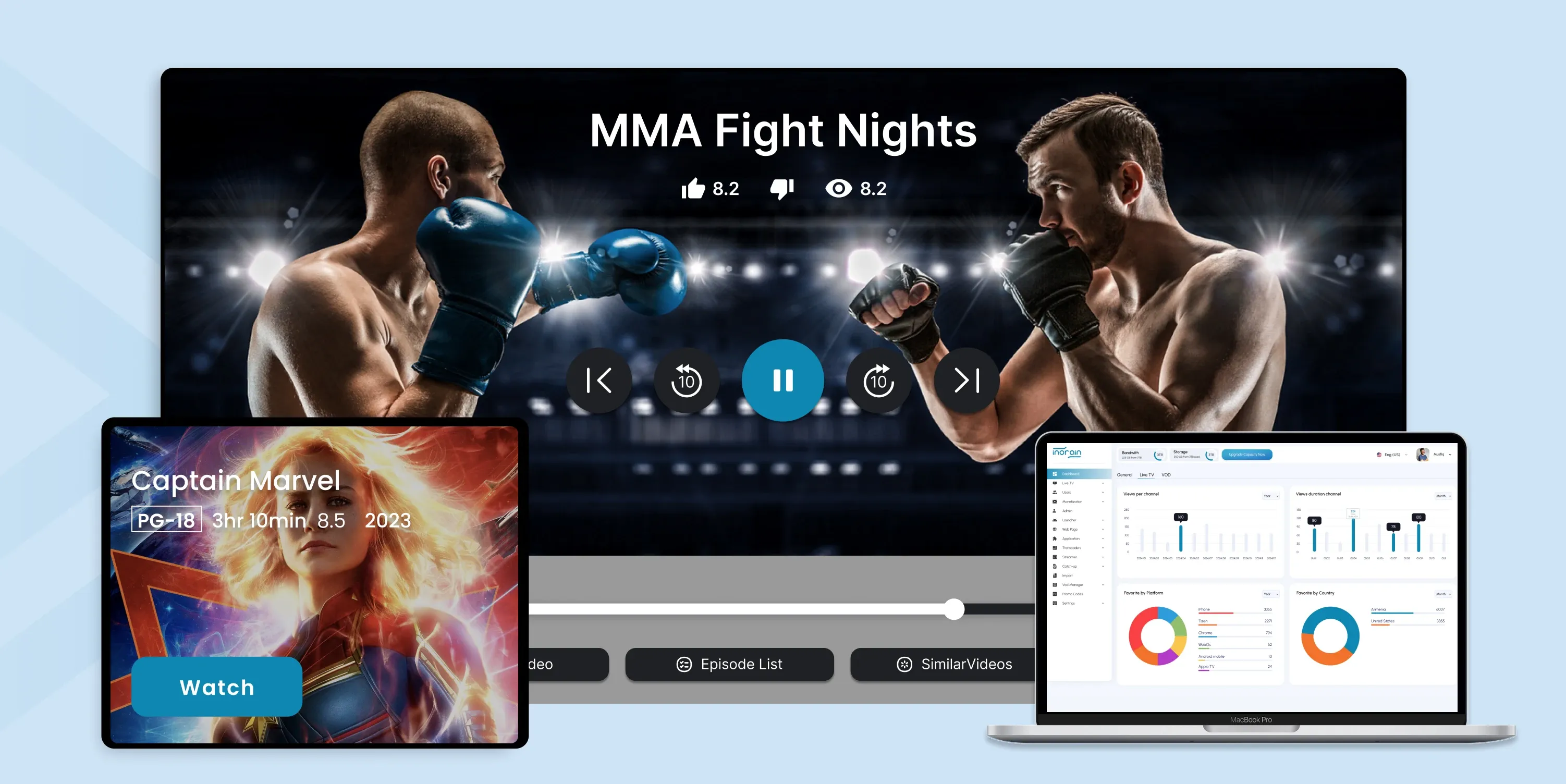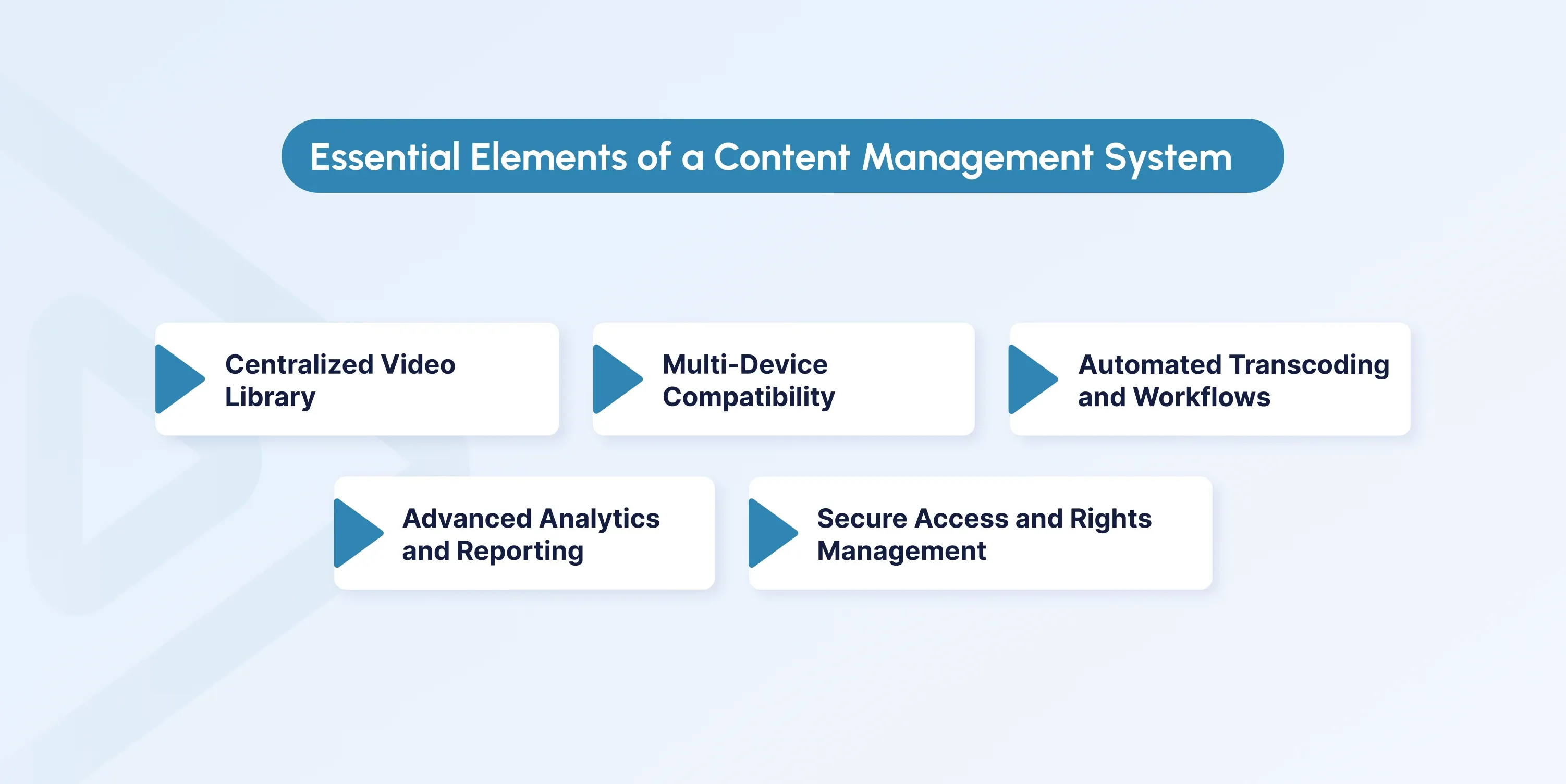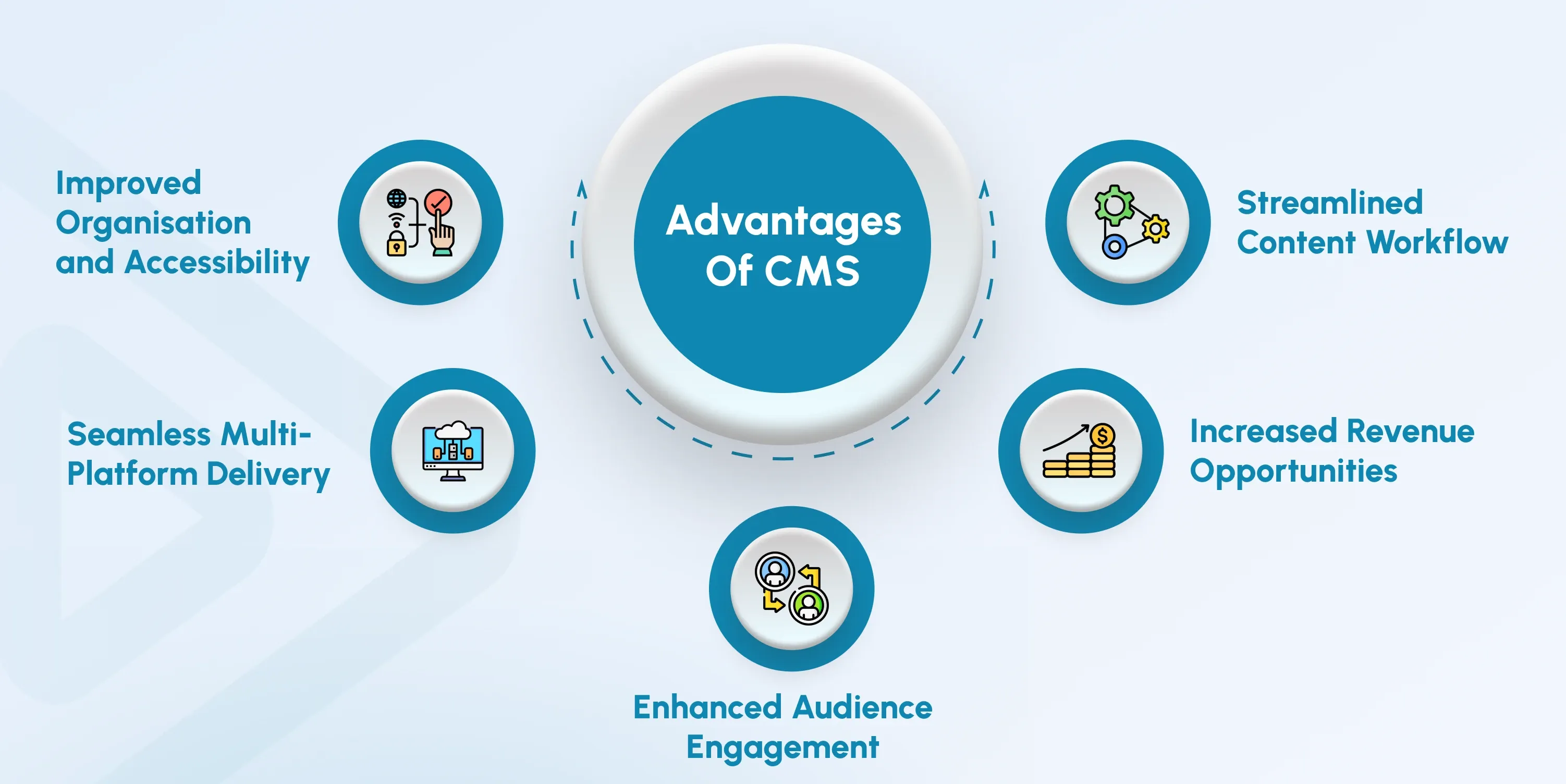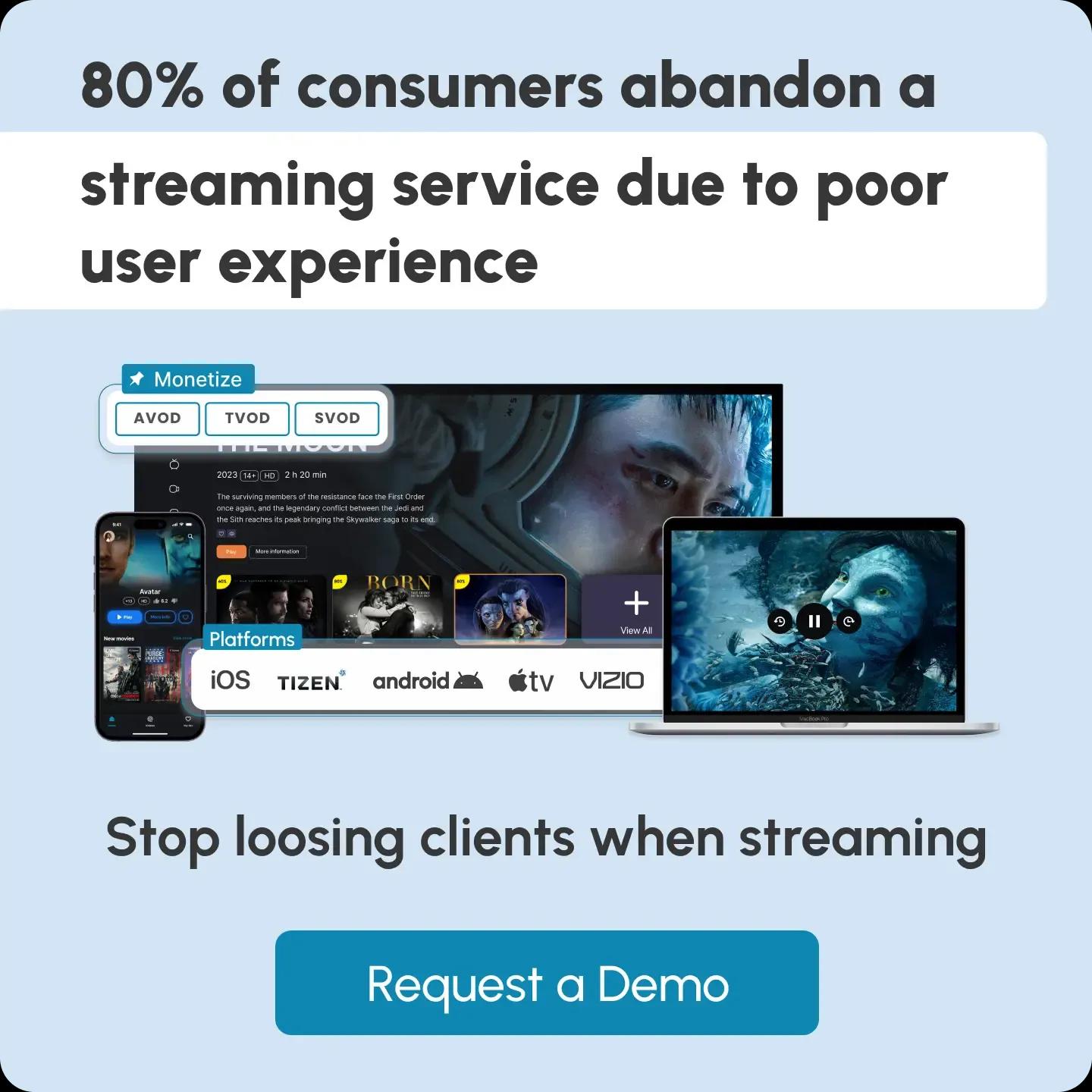
What is a Video CMS? Video Content Management Guide
Video content management is the methodology and tools used to arrange, save, and distribute video content across several platforms and devices.
A well-organized video content management system has great potential for media corporations, educational institutions, and corporate businesses, as well as for audience involvement, content distribution, and operations simplification.
Understanding how video CMS fits into your organization allows you to use video as a powerful tool for growth and success. In this article, we’ll guide you through everything you need about video content management and its impact on your business.

Key Takeaways
- Video content management system works as an organising tool that stores, secures, and distributes your content.
- Video CMS keeps all video content in one place with easy retrieval through metadata, categories, and search.
- With a video CMS, you can deliver high-quality video across devices with adaptive bitrate streaming and CDN support.
What is Video Content Management?
Video content management organizes, stores, and distributes content across different platforms and devices. It covers every step of a video's journey—from production and storage to distribution and performance analysis.
A solid video content management system (video CMS) is a game-changer for businesses and content creators who rely on video. It ensures your content is easy to find and use across multiple platforms and helps deliver high-quality video experiences that boost audience engagement.
A video CMS is like the backbone of your video operations, keeping everything in one place so it's easy to manage, categorize, and pull up whenever needed. Whether you're distributing through IPTV, OTT, websites, or mobile apps, a video content management system ensures your content works seamlessly on any device, giving viewers a smooth, uninterrupted experience.
Plus, with features like user analytics, automation, and content monetization tools, video content management platforms help you use your video content to drive growth and increase interaction with your audience.
Key Features of a Video Content Management System
 A typical video content management system should have the following features:
A typical video content management system should have the following features:
1. Centralized Video Library
A centralized video library allows you to store and organize all your video content in one place, making it easy to access, retrieve, and categorize your assets. Whether managing a small collection or an extensive archive, this media content management system gives you complete control over your entire video portfolio.
Using metadata, such as keywords, categories, and time frames, your videos become more searchable, making it easy to find specific content. This quick access is a huge advantage for companies that frequently produce content or maintain extensive video libraries, streamlining operations and saving time.
2. Multi-Device Compatibility
Today’s audience consumes content on a wide variety of devices, including laptops, tablets, smartphones, and smart TVs.
A video content management system ensures that your videos are optimized for all screen sizes, resolutions, and operating systems. This guarantees a seamless viewing experience no matter how or where your audience engages with your content.
With excellent cross-platform compatibility, your content plays flawlessly, improving user satisfaction and expanding your reach across different devices.
3. Automated Transcoding and Workflows
Managing multiple video formats and resolutions can be time-consuming and complex. Automated transcoding in a reliable video CMS simplifies this process by automatically converting your videos into the appropriate formats for various devices, platforms, and network conditions.
Combined with automated workflows for tasks like tagging, publishing, and encoding, this system reduces manual work and speeds up content delivery, making your operations more efficient.
4. Advanced Analytics and Reporting
Understanding how your audience engages with your video content is key to improving performance. A video CMS provides advanced analytics tools that offer detailed insights into viewer behavior, including watch times, drop-off points, and geographic data.
These insights help you measure the success of your videos and refine future projects based on a data-driven approach. By knowing how your audience interacts with your content, you can tailor your strategy to boost engagement and performance.
5. Secure Access and Rights Management
Secure access and rights management are critical for platforms like OTT and IPTV. A video content management system helps you organize, distribute, manage, and monetize content effectively.
This ensures secure, high-quality video experiences while managing every stage of the content lifecycle—development, storage, distribution, and performance analysis. Video content management systems safeguard content by controlling access rights, ensuring your assets are protected and delivered securely to your audience.
The Role of Video CMS in OTT/IPTV Platforms
A video content management system is vital to the success of OTT and IPTV platforms. Acting as the backbone of these platforms, a video CMS oversees the entire content lifecycle, from development and storage to distribution and analysis.
One of the primary roles of a video CMS is managing large volumes of video footage while ensuring easy access and searchability. For OTT and IPTV platforms that offer vast content libraries, a well-maintained CMS ensures that videos are correctly labeled, categorized, and ready for instant access..
If you’re an OTT/IPTV provider, knowing what resonates with your audience can significantly influence platform success, content creation, and advertising strategies.
A video CMS also ensures secure content distribution, using features like access control, encryption, and digital rights management (DRM). This is especially important for protecting proprietary or premium content, mainly when using pay-per-view or subscription models.
Benefits of Effective Video Content Management
An effective video content management platform provides several benefits for companies and content creators who depend primarily on video for their operations, especially for OTT and IPTV platforms. By managing, storing, and disseminating video content, an efficient video CMS increases productivity, engagement, and income potential.

Improved Organization and Accessibility
A well-structured media content management system efficiently categorizes and classifies video assets, making it easy to search and retrieve content. This integrated access enables teams to quickly locate and use video content, saving time and reducing the risk of duplicating efforts.
Whether managing a small collection or a large library, a compelling video CMS ensures smooth content organization and accessibility.
Seamless Multi-Platform Delivery
Whatever your audience's interaction with your videos, a video content management system guarantees a seamless viewing experience by enabling content distribution over several platforms.
Video CMS improves video performance on devices such as computers, smart TVs, and cellphones by lowering buffering and raising quality. This multi-platform adaptability helps you engage a larger audience.
Enhanced Audience Engagement
The best video content management systems provide valuable insights into audience behavior, helping you understand how viewers interact with your content.
By analyzing preferences, viewing patterns, and watch times, you can develop a personalized content strategy that increases engagement. This data-driven approach allows you to tailor your content to your audience's needs in the name of sustained interest and interaction.
Streamlined Content Workflow
With automation features like transcoding, tagging, and publishing, a reliable video CMS significantly reduces manual tasks.
Automation speeds up the content creation, allowing your team to release videos more efficiently while minimizing human error. As a result, you maintain consistent content delivery, meet deadlines, and reduce operational bottlenecks.
Increased Revenue Opportunities
Are you looking to monetize your content? With a video CMS, you can unlock new revenue streams. An enterprise video content management platform offers features like ad integration, pay-per-view models, and subscription management, allowing you to monetize your content in various ways. With tools that support targeted advertising and personalized content recommendations, you can increase both viewership and revenue from your video assets.
Integrating Video Content Management System with OTT Platforms
A video CMS has an important role in managing, organizing, and delivering video content for Over-the-Top (OTT) services. By integrating a video CMS with an OTT platform, you can efficiently handle video encoding, metadata management, and multi-device distribution while using content delivery networks (CDNs) for optimized playback.
Automated Workflows
A Video CMS enables automated workflows, allowing for bulk uploads, transcoding into multiple formats, and metadata tagging. This streamlines content organization and ensures videos are accessible across different devices and network conditions.
Secure Access and DRM
To protect premium content, a Video CMS offers security features such as digital rights management (DRM), encryption, and access controls. These measures prevent unauthorized distribution and piracy.
Monetization and Revenue Optimization
You can easily implement monetization models such as subscriptions, pay-per-view (PPV), and ad-based revenue streams. This flexibility allows you to maximize earnings from your OTT platform.
Advanced Analytics and Audience Insights
Integrated video analytics provide detailed insights into viewer behavior, engagement metrics, watch time, and drop-off rates. These insights help optimize content strategies and improve user experience.
Harness all of these benefits by partnering with inoRain. Our OTT solutions will help you manage and monetize your content, reaching new revenue streams. Contact us to get started. Good luck!
Conclusion
A video content management system is a cornerstone for a successful streaming platform.
Organized content is easier to manage, distribute, and monetize. Plus, video CMS provides valuable insights about your target audience, helping you take a more personalized approach. So, if you want to elevate your content quality and management, a video CMS is a must.
With the right technology and a deep understanding of your audience, you can ensure your content consistently delivers value and drives real profit. Partner with inoRain today and unlock new growth opportunities!
FAQs
What is a video content management system?
A Video Content Management System (Video CMS) is a platform designed to store, organize, manage, and distribute video content efficiently. It provides a centralized system for handling video files, making managing large amounts of video content easier.
What do I get from using a video CMS?
With a video CMS, you can store, organize, stream, and secure video content efficiently. Video CMS offers features like metadata tagging, adaptive streaming, access controls, analytics, and integrations with other platforms. By automating video processing and distribution, you can enhance user engagement, enable monetization, improve security, and save time and costs.
Do I need a video CMS as a content creator?
If you manage a large video library, need advanced security, or want complete control over distribution and monetization, you must use a video CMS.
However, suppose you primarily use platforms like YouTube or Vimeo for hosting and audience engagement. In that case, a Video CMS may not be necessary unless you require custom branding, analytics, or private video hosting.
Does video CMS help with monetization?
Yes, video CMS helps by offering various monetization models (SVOD, TVOD, AVOD, PPV, etc.) and tools for sponsorships, partnerships, and e-commerce integration.
What content cannot be monetized?
Content that violates platform rules, such as illegal content or copyright infringement, cannot be monetized. Many platforms also prohibit content monetization that includes hate speech, graphic violence, adult themes, or misinformation. Ensuring that your content complies with platform policies and legal regulations is essential before attempting to monetize it.
How do I start monetizing content?
Create your own OTT platform that allows video content to be monetized, with choices like pay-per-view, subscriptions, and ad placement models. Open an account with a reputable OTT solutions provider like inoRain. After that, you can evaluate and modify your platform based on audience interaction.
Co-founder / CTO
Hi, I'm Armen, the CTO and Co-Founder of inoRain OTT, as well as the Co-Founder of HotelSmarters. With 15+ years of background in digital streaming technology, I specialize in OTT strategies and interactive TV solutions, helping businesses maximize their revenue potential. At HotelSmarters, I focus on leveraging tech to transform hotel operations, while at inoRain, I drive innovation in end-to-end OTT solutions. Let’s connect and explore new opportunities!

OTT Advertising: Types, Best Practices, and Strategies
Over-the-top (OTT) advertising has transformed how brands connect with consumers.

VPlayed Alternatives: inoRain vs. VPlayed
Explore inoRain as a VPlayed alternative, comparing features, pricing, and OTT solutions to find the best platform for your streaming needs.

Custom OTT Platform Development: How to Start an OTT Business
This guide will walk you through everything you need to know about the OTT platform development.
